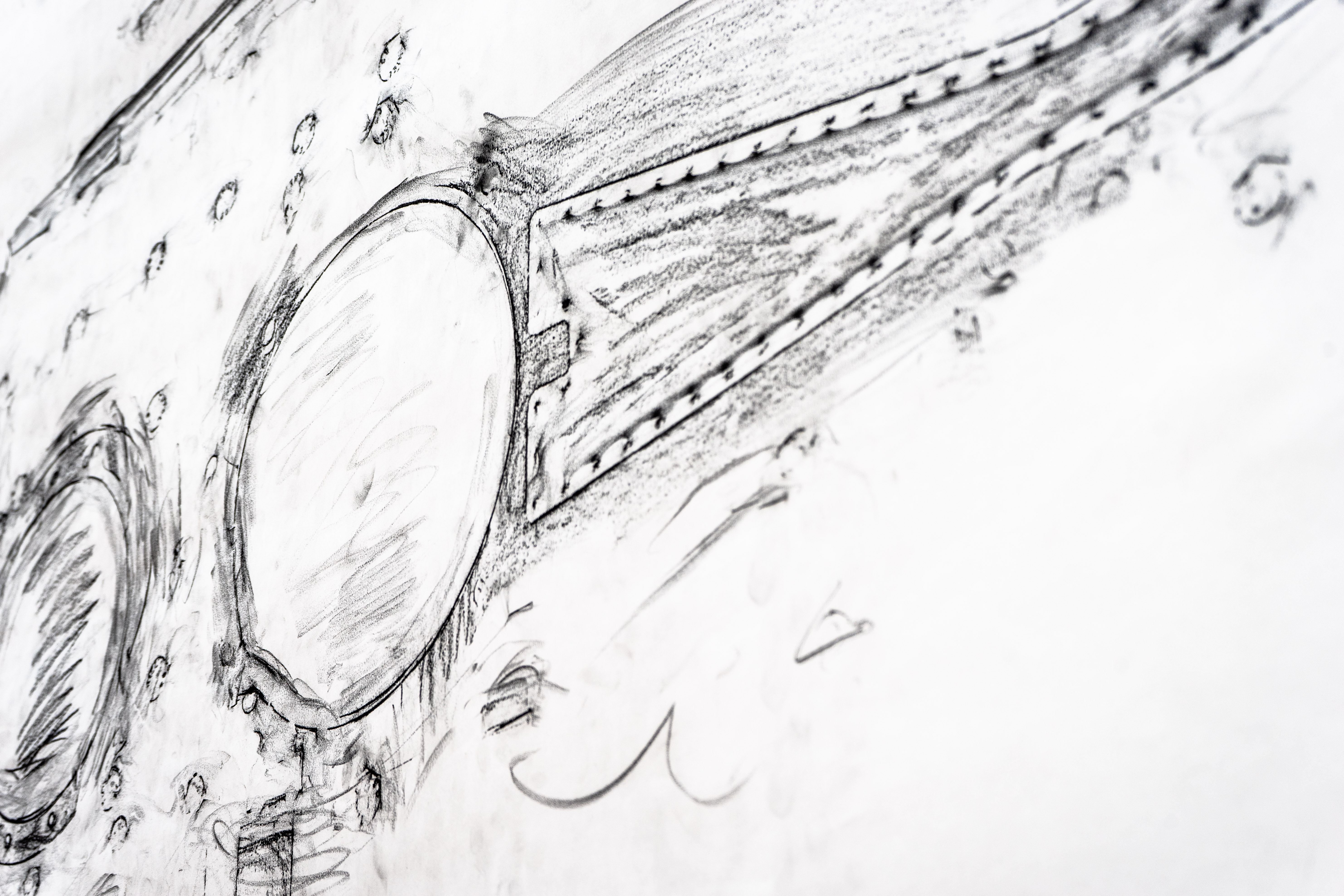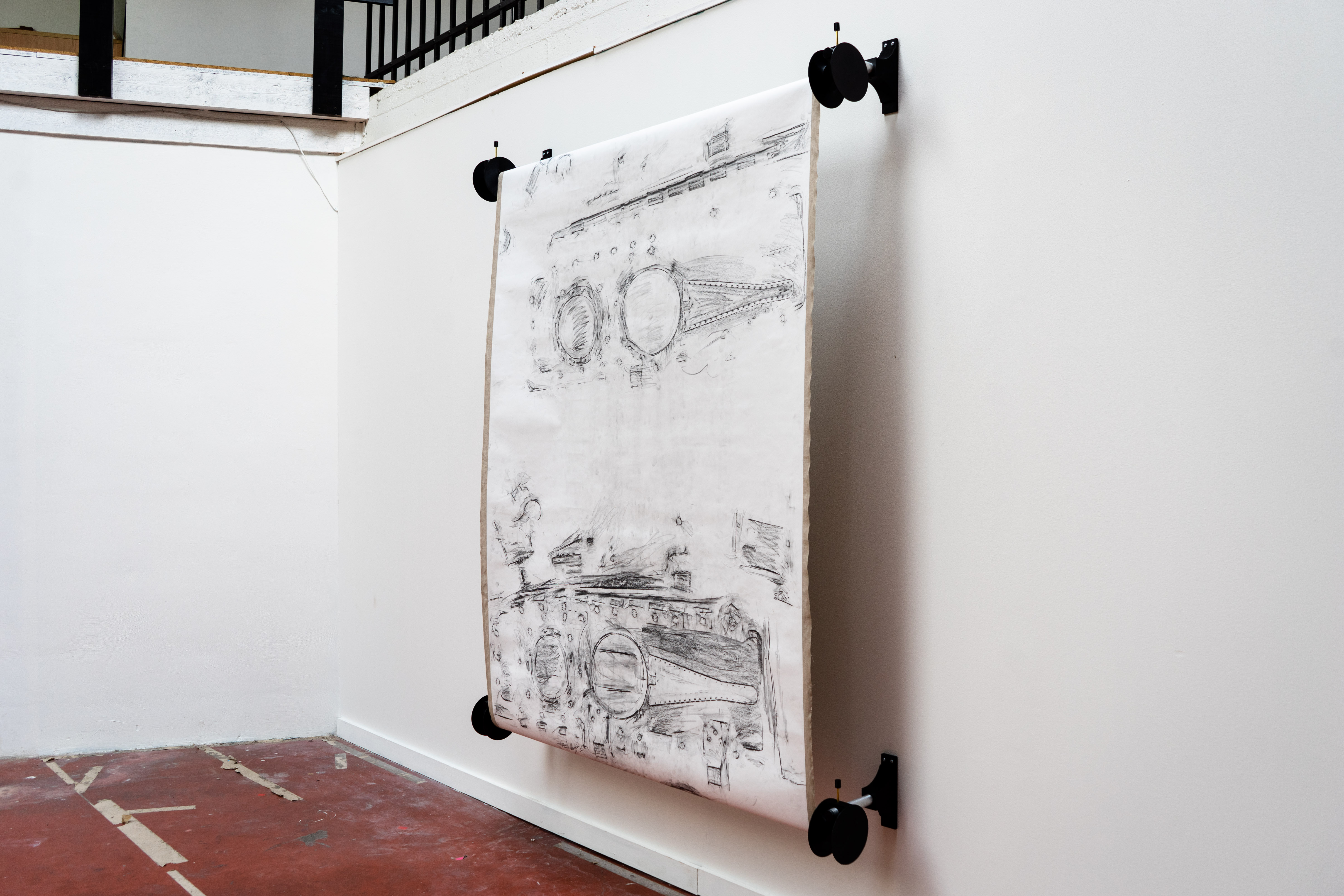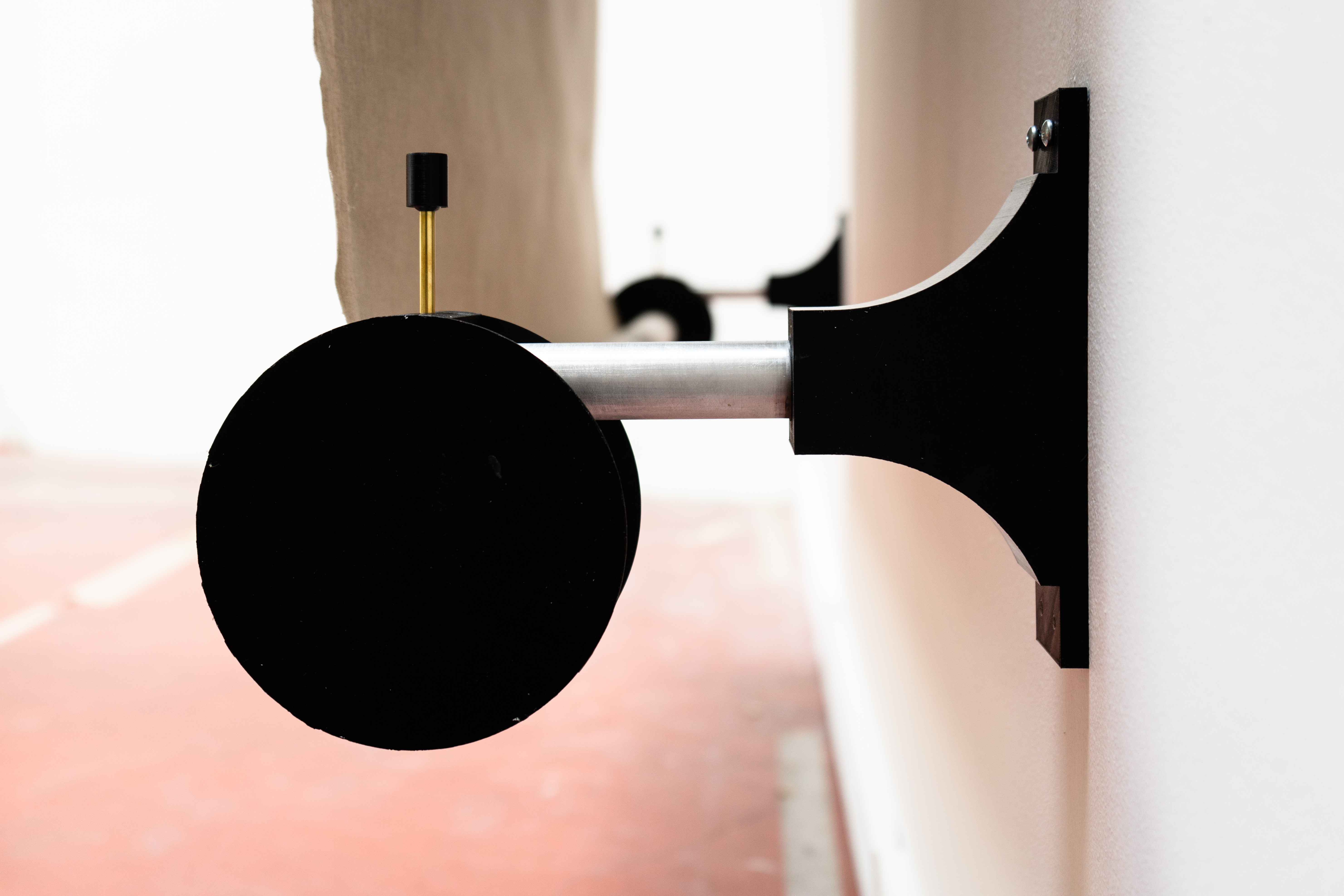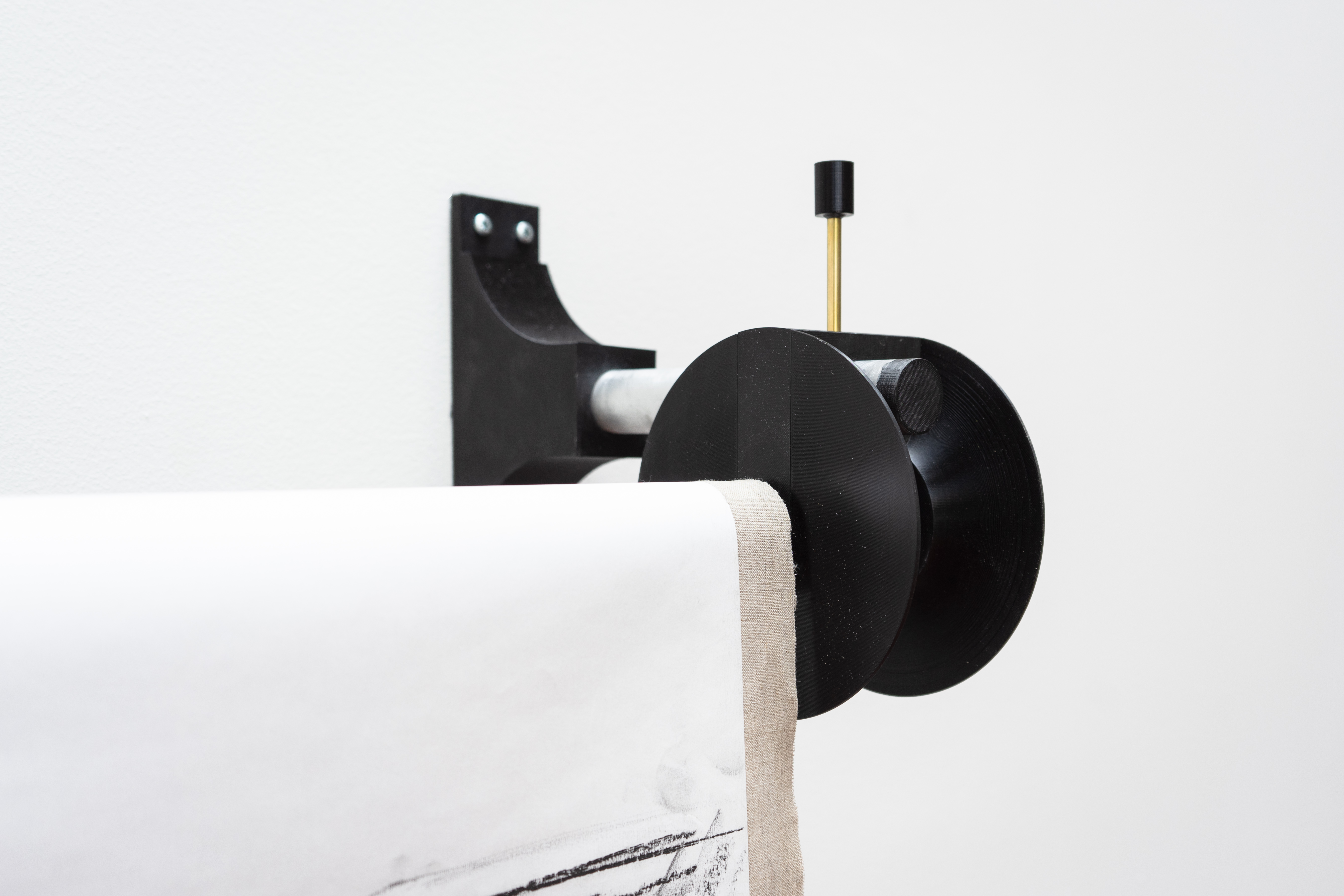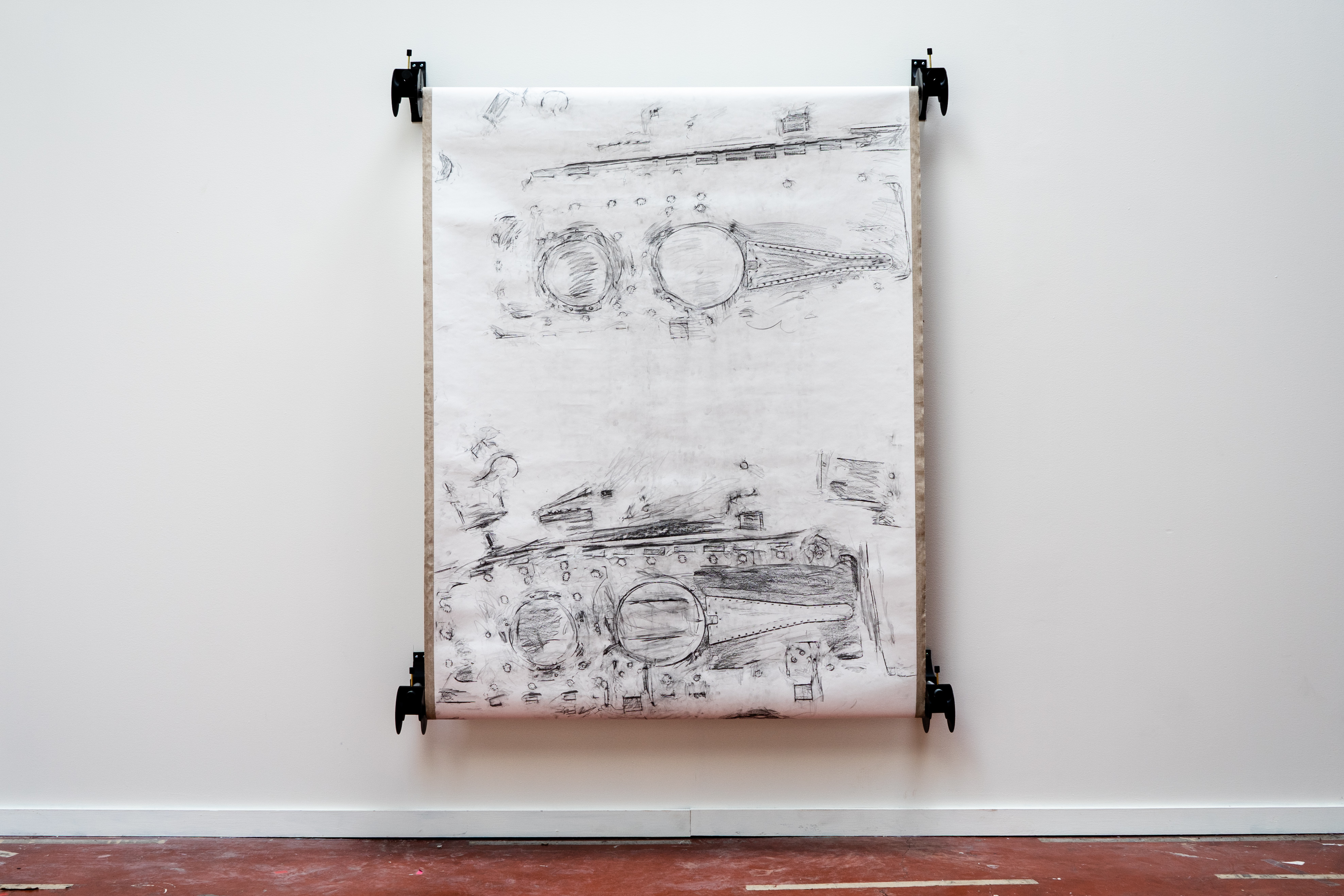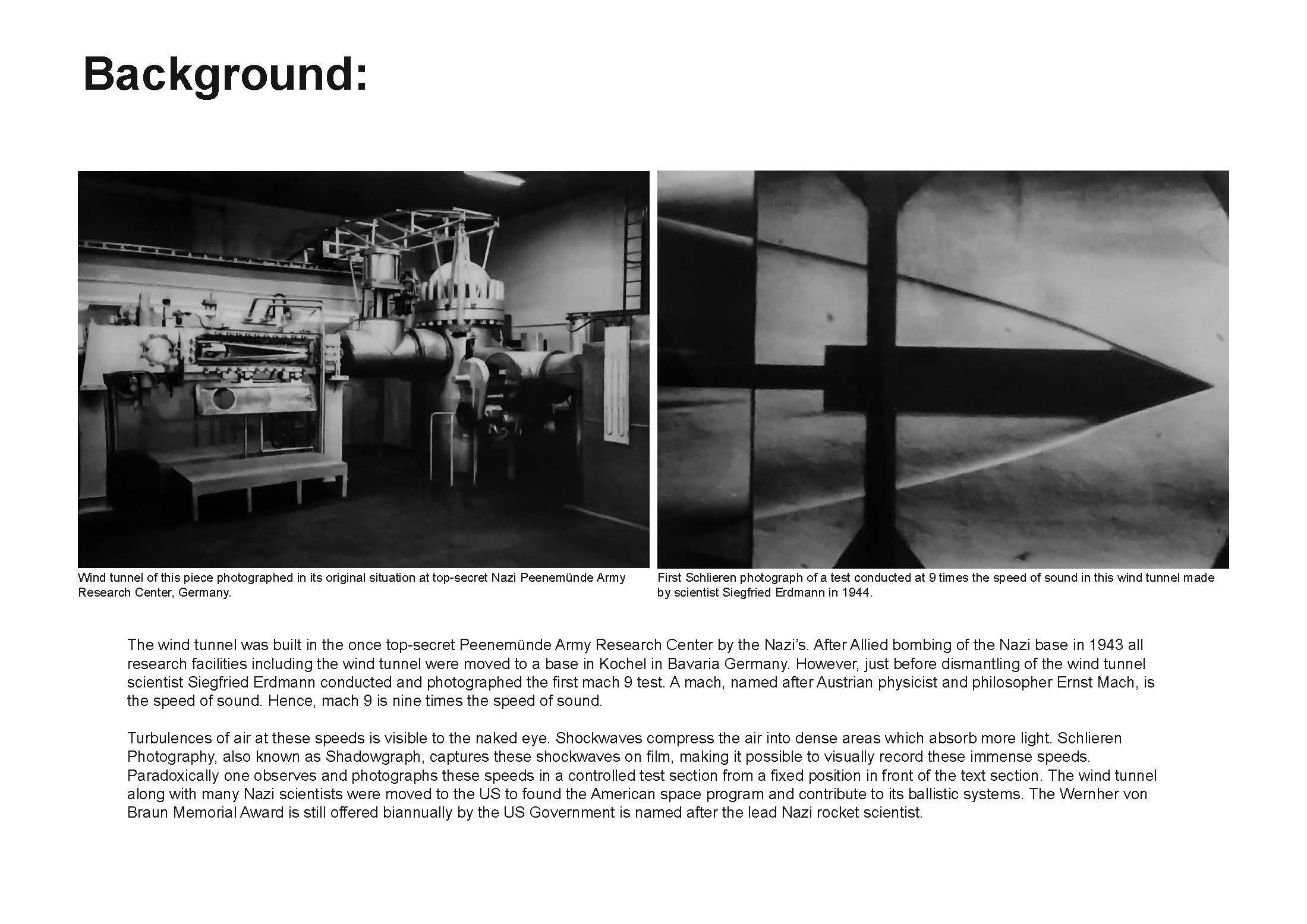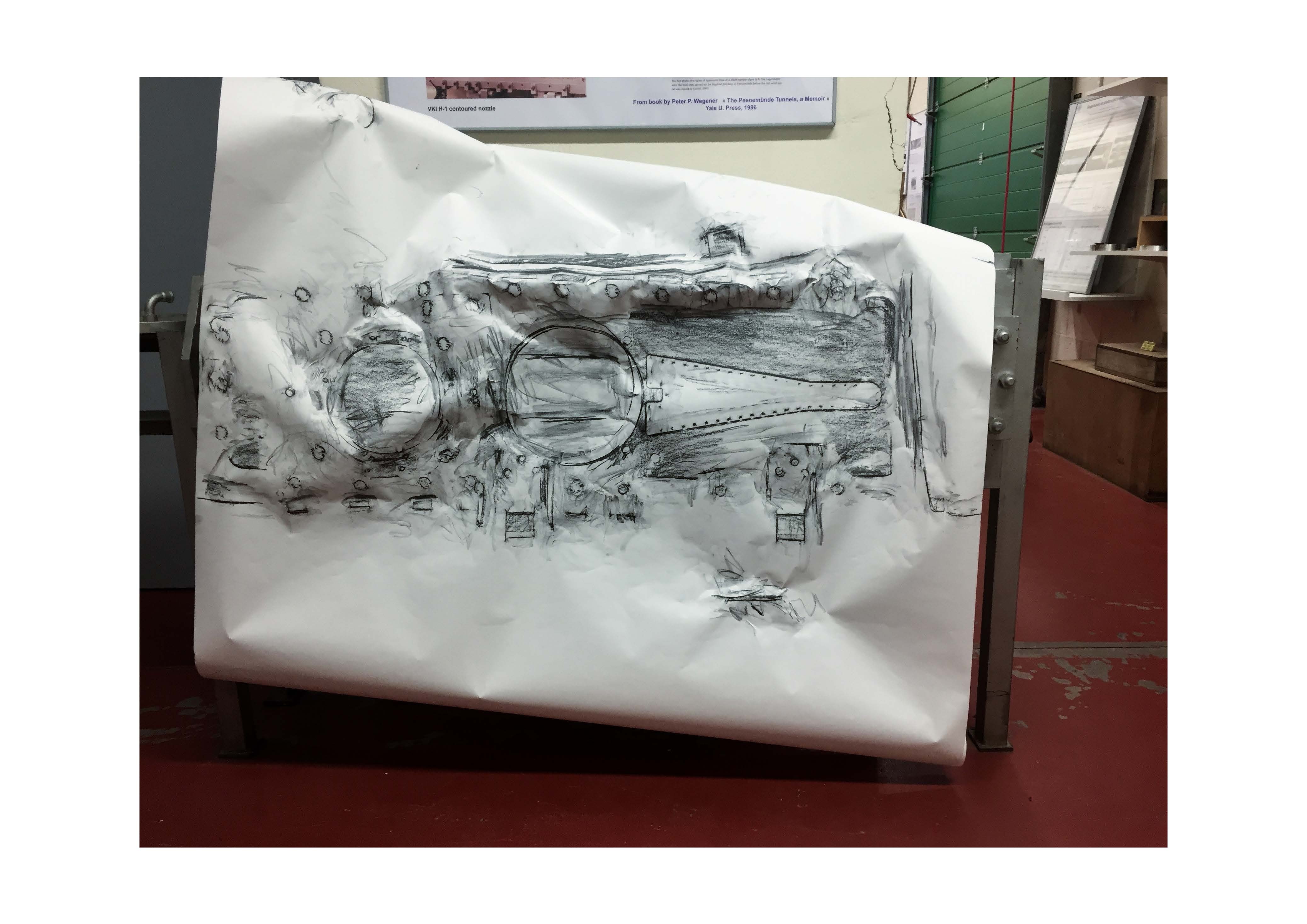Peenemünde Scroll
Materials: Graphite on paper mounted on linen, aluminum, 3D print, and brass
Dimensions: Height variable from 100 to 370 cm, with the ideal height of 220 cm. 200 cm wide.
Dates: 2018-20
Description:
Text by Piero Bisello
![]()
![]()
![]()
![]()
![]()
![]()
![]()
![]()
![]()
![]()
![]()
Materials: Graphite on paper mounted on linen, aluminum, 3D print, and brass
Dimensions: Height variable from 100 to 370 cm, with the ideal height of 220 cm. 200 cm wide.
Dates: 2018-20
Description:
This scroll uses rubbing, an archeological technique used to study architecture, to capture what was the world’s first supersonic wind tunnel. The wind tunnel originates from the once-top secret Nazi research facility located in Baltic-coast city of Peenemünde, Germany. The V2 rocket, the world’s first modern rocket used during the Battle of Britain was developed there. After their victory in the war, the US and USSR agreed to split the V2 scientists and facilities equally to found their own space programs. This marked the transition of a technology developed for destruction of humanity to one of humanity’s greatest endeavors. Ahmed's artwork comes across as a representation of the 20th century modernist approach to technology, solutions designed to face bigger-than-human challenges. The drawing technique (the rubbing of secluded wind tunnel surfaces) speaks of a furtive strategy to bring to the public what can’t otherwise be shown.
Text by Piero Bisello

